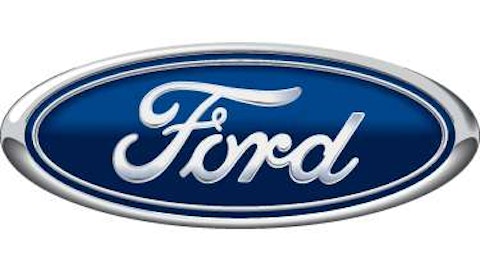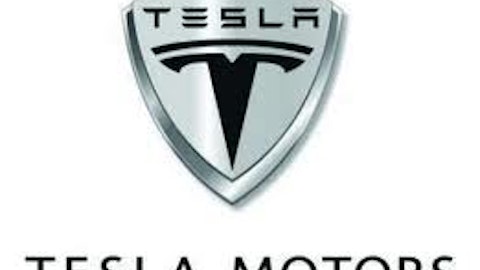Part of the problem for Tesla is the age old one of competition. The formula of putting an electric drive train into a luxury car is easily duplicated, and General Motors Company (NYSE:GM) is about to do precisely that with the drive train from the Chevy Volt. The Volt is an innovative car that combines a primary electric drive train with a gasoline engine generator to take over when the batteries are depleted. The generator allows a smaller, less expensive battery pack to be used in the Volt, with consequently shorter EPA estimated battery range of 38 miles.
The Volt drivetrain is a compromise solution designed to maximize the benefits of electric drive while minimizing the inconvenience and added cost. The sticker price of the Volt is $39,145 before tax credits. The gas generator relieves range anxiety, but makes the car seem less eco-friendly, and the Volt hasn’t won many fans, despite its relatively quiet drive train.
General Motors Company (NYSE:GM) is about to transplant the heart of the Volt into its Cadillac ELR coupe, which will be available in early 2014. As far as I can tell, there won’t be any performance enhancements to the drivetrain for the ELR, just a much nicer interior and an exterior that is, well, more attention getting than the Volt.
Whether the ELR will be a success remains to be seen, but it demonstrates that the major automakers aren’t going to leave Tesla alone. Tesla needs to bulk up with a broader range of models and an under $30,000 electric car.
Pitfalls of the $30,000 electric car
The Nissan (NASDAQOTH:NSANY) Leaf illustrates the pitfalls of trying to build an affordable electric car. The leaf uses basically the same battery technology as the Volt/ELR and the Tesla S: lithium ion batteries. In order to keep the cost down, the Leaf just uses a smaller battery pack and a lower power electric motor.
Whereas the base Model S has a 302 hp motor, the Leaf has a 107 hp motor. And the range of the Leaf is 75 miles. The sticker price of the base Leaf is commendably low at $28,800, but the Leaf is the proverbial Second Car that no one will really want to drive.
Clearly a Leaf-like Tesla would be a complete non-starter. At D11 Elon Musk was asked what it would take to build an electric car for about $30,000. He estimated that it would be possible in about 3-4 years. When pressed about specifics, he said that such a car would require further design optimization, be 20% smaller, and have an order of magnitude greater production volume.
His answer was perhaps a little disingenuous, since he knows full well that the cost problem centers around the batteries and range capability. Lithium ion batteries are used in everything from cell phones to the Boeing 787. They’re already in high volume production, so there isn’t really much additional economy of scale to be realized. The batteries just don’t store enough energy per unit weight. Musk also knows that researchers have developed a new class of lithium ion batteries with about 4 times the capacity of the current generation.
The impact of such batteries will be truly remarkable, if they prove practical to mass produce. Imagine a Tesla Model S with a range of 800 miles, or a low cost Tesla with a range of 300 miles where the battery pack only cost $9,000 rather than $34000. Until recently I would have thought that such a quantum leap in battery technology was decades away.
Until I read a paper by a research group at Northwestern University, led by Harold Kung. In the dry unsensational language of science the group described how they had solved the main technical problems in fabricating this new battery and presented the measurement results on a working battery that proved it would provide 4 times the energy storage while having a long life. Getting both properties had always been the fundamental problem. And their results were not a fluke, since another group working on a somewhat different approach has essentially duplicated the Northwestern results.
How long will it take to get the new batteries into production? You guessed it. Three to four years.
The article The Big Battery Bet of Elon Musk originally appeared on Fool.com.
Mark Hibben has a position in Tesla Motors (NASDAQ:TSLA). The Motley Fool recommends General Motors and Tesla Motors . The Motley Fool owns shares of Tesla Motors. Mark is a member of The Motley Fool Blog Network — entries represent the personal opinion of the blogger and are not formally edited.
Copyright © 1995 – 2013 The Motley Fool, LLC. All rights reserved. The Motley Fool has a disclosure policy.


